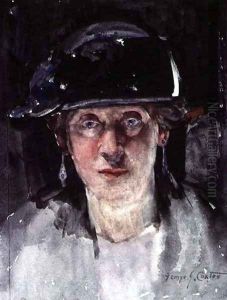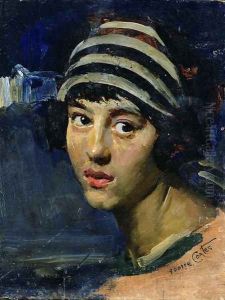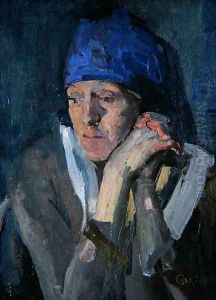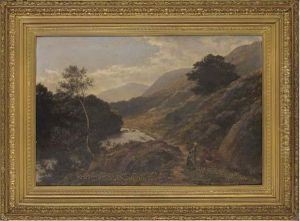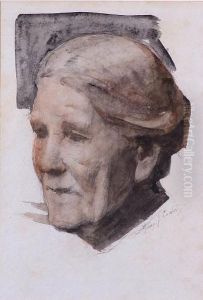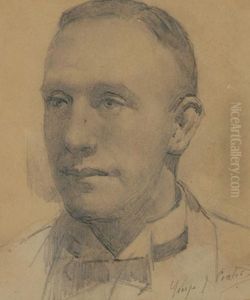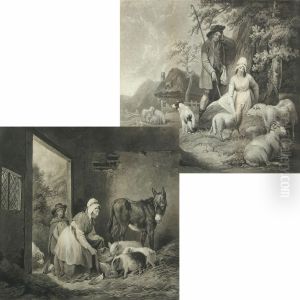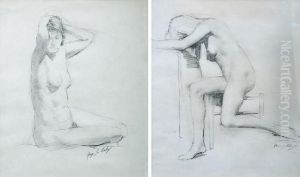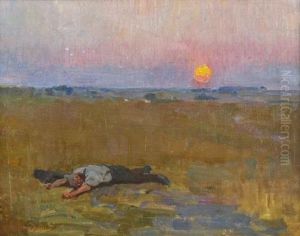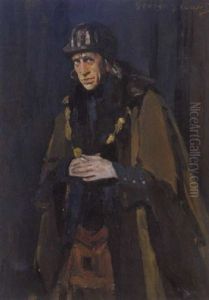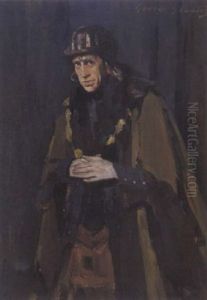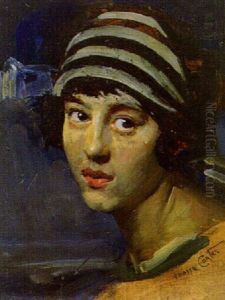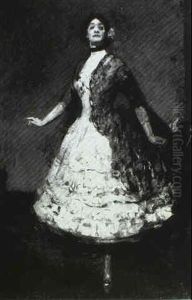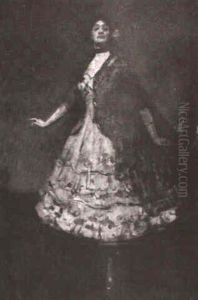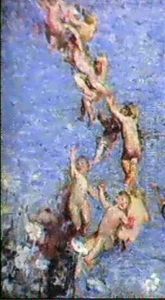George James Coates Paintings
George James Coates was an Australian artist, born on August 8, 1869, in Emerald Hill, Victoria, which is now part of South Melbourne. He was the son of John Coates, a painter, and his wife Mary Ann. Demonstrating an early aptitude for art, Coates was encouraged to pursue his talents, and he began his formal training at the National Gallery of Victoria Art School in Melbourne under the tutelage of artists like Frederick McCubbin and Bernard Hall.
Coates's artistic career initially developed within the context of the Australian art scene. He became known for his portraiture and figure paintings. In 1896, he married fellow artist Dora Meeson, who was also a student at the National Gallery of Victoria Art School. The couple later moved to Europe to further their artistic education and opportunities. They lived in Paris for some time, where Coates studied at the prestigious Académie Julian. The experience of European art and culture had a profound influence on his work, and he began to gain recognition for his sophisticated style and technical skill.
In 1901, Coates was awarded the Salon Gold Medal in Paris, an esteemed honor that signified his growing reputation as an artist of note. He and Dora spent many years in Europe, particularly in England, where Coates's portraiture garnered a distinguished clientele, including aristocracy and members of the military. His work was influenced by the impressionist movement, although he maintained a distinctive style that was characterized by a strong sense of realism and attention to detail.
Coates served in World War I, and his experiences during the war impacted his artistic output. He created several works that reflected the harsh realities and human cost of the conflict. After the war, he returned to portrait painting, which remained his primary genre. His portraits were notable for their psychological insight and sensitive depiction of the subject's character.
George James Coates's legacy is that of one of Australia's most celebrated portrait painters of the early 20th century. His work is represented in many major Australian galleries, including the National Gallery of Australia and the Art Gallery of New South Wales. Coates's contribution to Australian art was significant, and his influence extended beyond his own practice through his role as a teacher and mentor to other artists. He died on July 27, 1930, in Melbourne, leaving behind a body of work that continues to be admired for its technical excellence and emotive power.
